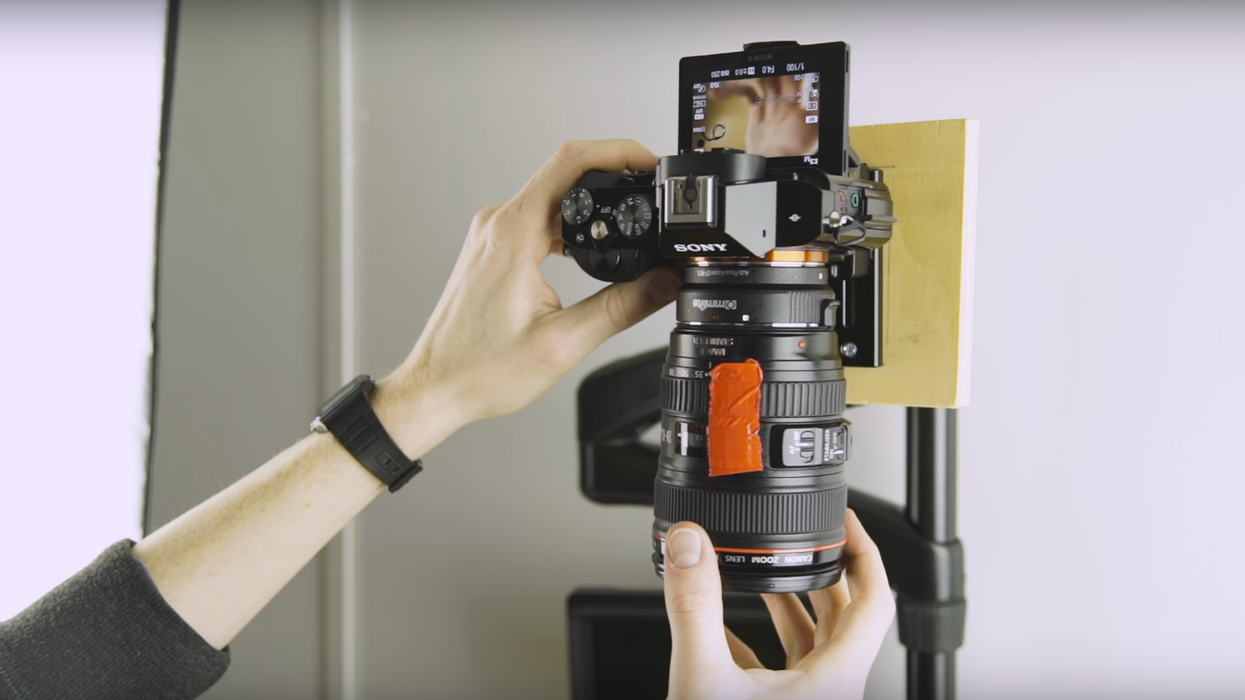Tutorial: How to Make Your Own Overhead Shooting Rig
Here's a way to build a rig that'll let you shoot some sweet overhead shots.

Overhead shots can be simply pretty to look at, but they can also be extremely useful for a wide range of projects. If you're interested in getting some of these shots in yours, you're probably going to need a rig that'll:
- hold your camera vertically
- bear the weight of your camera
- allow you to use it properly to get the shot you want
In this tutorial from The Film Look, you get to learn how to put your own DIY overhead shooting rig together with a few materials you can pick up at any old hardware store. Check it out:
The first thing you're going to need is a monitor stand (like this one). These things are relatively cheap—around $20 to $30—and you can find them at pretty much any office supply store. The next thing you need to do is mount a square of wood to the monitor stand, and then mount a quick release plate to the square of wood.
The rest depends on the space you're shooting in, but suffice it to say you're going to have to mount your new overhead rig to a wall, desk, or whatever to allow it to stand up on its own and support your camera. A quick note: make sure you know how much weight your monitor stand can hold. If you're shooting on a small mirrorless camera for instance, you're probably not going to have a problem. (Also, make sure you've got a place to put a monitor if your camera's LCD screen isn't cutting it.)
Now, you may have your rig all set up, but you also need to make sure that the "set" for your overhead shots look good, too. The guys from The Film Look utilized a variety of backdrops placed on a table to make their shots look interesting and appealing to the eye, so be sure to take those kinds of things into consideration before hitting record.
Director Wes Anderson made the overhead shot super fashionable, so much so that countless filmmakers and videomakers decided to work it into their own projects, whether they be feature films or Shopkins Blind Basket unwrappings on YouTube. (Can you tell I have a kid?) It just goes to show how versatile the shot actually is, and you can successfully include them in your work—just be sure to be intentional with your staging and set design. (Yes, you still design and stage even when the set is a tabletop.)
Source: The Film Look











